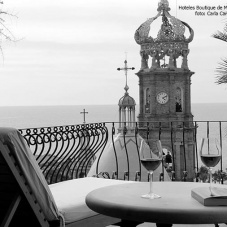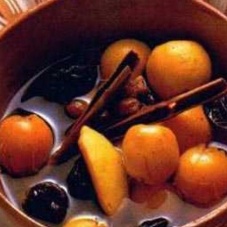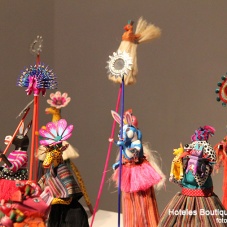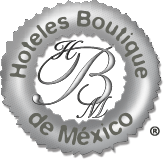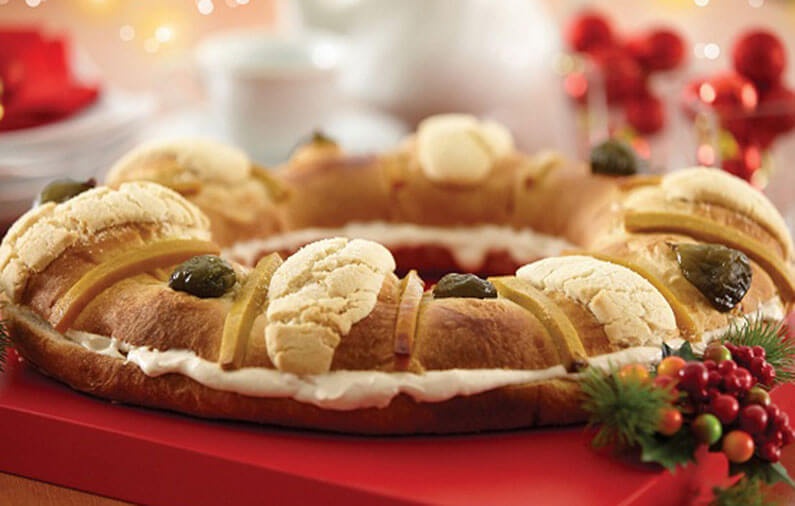
An array of cultural elements are what make Mexico a country so rich and diverse in its uses and practices, so much that UNESCO continues awarding the title of Intangible Cultural Heritage to several of its actors, such as gastronomy and charrería.
The presence of catholic costumes are not alien to the own Mexican idiosyncrasy, and what could be best than sharing with guests, visitors, diners and collaborators the search for this over-used but necessary word in the touristic activity: EXPERIENCE, EXPERIENCE, EXPERIENCE…
X, Y, Z and millennial generations have confirmed that one of their main travel motivations is cultural. They want to interact with the local uses and practices and are willing to co-participate on them in order to apprehend the cultural element present in every trip.
The Rosca de Reyes possesses beautiful elements worth sharing with our guests, especially foreigners.
There are several variations of this bread on the planet. In Portugal, for instance, it is called “Bolo Rei”; in some parts of the United States it is known as “Kings’ Cake” and is still used in some Mardi Gras celebrations; In France, Belgium, Switzerland and Eastern Canada it is called “Gâteau de Rois”; Greeks call it “Vasilopita” and Catalonians “Tortel”. Colombia has a sweet bread called “Roscón”, stuffed with “bocadillo” (guava sweet) or “arequipe” (milk sweet), but in Mexico it is called “Rosca de Reyes” and its historical sense overpasses any expectation of communion maong friends and family within the Christian faith.
The story has it that tasting of bread with dates and figs starts in the Roman “Saturnalia”. This festivity honoring God Saturn was carried out between December 17 and 23, matching the winter solstice.
The arrival of Christianism tried to eradicate this pagan celebration, which in the long run would be paired with Christmas. The same Romans were the ones who started hiding a broad bean inside the bread.
Around the year 354 AD the birth of Jesus started to be celebrated on December 25. A little later, Epiphany started to be commemorated on January 6, the same day western Christians celebrate the arrival and adoration of the
Three Wise Men to Jesus (orthodox Christians celebrate the baptism of Child Jesus).
The tradition of the cake was settled during the Middle Ages in countries as France and Spain, where the preparation has changed along the centuries. In Mexico the tradition was introduced in the 16th century and the broad bean was substituted by porcelain dolls, later replaced by plastic ones.
It is worth noting that each of the cake’s elements has a meaning:
The date is the same as that of the Three Wise Men’s arrival to deliver gifts to Jesus, so many catholic homes use this day to deliver toys and presents to the kids as a different gift from those on Christmas.
The oval shape symbolizes God’s love, which has no end or beginning.
Crystalized fruits represent the grace brought by Jesus Christ. Other say that they are the symbol of incense, myrrh and gold brought to Child Jesus, while some others consider them to be the Three Wise Men’s jewels meaning love, peace and happiness, or even the mundane distractions stopping man from coming to God.
The traditional broad bean hidden inside the bread was replaced by the figurine of Child Jesus, formerly made of porcelain and now of plastic. This child represents the time Joseph and Mary hid Jesus from King Herod, who had all babies killed when he learned the “King of Kings” had been born.
The knife symbolizes the death danger Jesus was exposed to.
That who finds the plastic baby in the bread will enjoy health, abundance, blessings and good fortune, and becomes the Divine Child’s godfather; this means he should dress the child with a gown and throw a party called “tamaliza”, with tamales and atole for the family and friends present during the Rosca eating.
The tradition of dressing Child Jesus:
Candlemas (on February 2) Child Jesus is lifted from the manger for his presentation in the temple. He is dressed up for Mass, then put in a niche to stay the the rest of the year.This celebration sets the ending of Christmastime.
This religious feast has its origins on the Bible passages of the presentation of Jesus in the temple of Jerusalem and the Purification of Virgin Mary. On this day candles are blessed to get them to keep evil and sickness away.
Candlemas is also considered a feast symbolizing the union between the indigenous people and the Christina thought, as it fuses religious and pre-Hispanic rituals, thus creating an original feast, unique in the world, as nowhere else is it celebrated as in Mexico.
All this creates a history, a tradition, a legacy worth preserving, sharing and delivering to our guests. Mexico Boutique Hotels wishes you happy holidays and a blissful new year. May health and traditions keep strong as an oak and the faith.
Happy New year, happy Three Wise Men Day, happy 2021.
The Mexico Boutique Hotels Family
- Tags:
- Boutique Tips

22 años de trayectoria en la industria hotelera, actualmente Director Adjunto de Hoteles Boutique de México, Presidente de la Asociación de Hoteles y Moteles así como del Fideicomiso de Turismo de Puerto Vallarta por 2 años consecutivos (2010-2012). Administrador de Empresas Turísticas y Hoteleras y Mercadólogo, ganador del premio "Empresario del Año 2012" por el Latin American Quality Institute. Director General en Hoteles de Categoría Especial, Consultor y Experto en aperturas de nuevas propiedades hoteleras. Ha laborado en distintos países de Latinoamérica especializando su perfil en procesos de calidad total y consultoría mercadotécnica.
Leave a Reply
